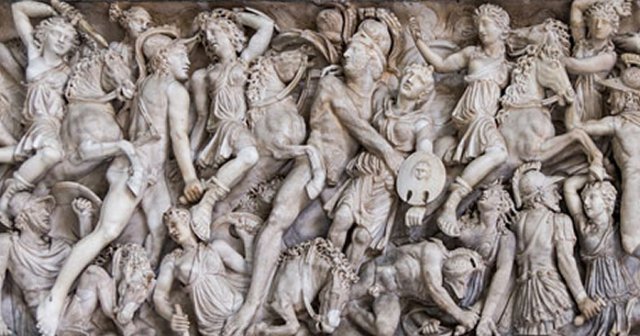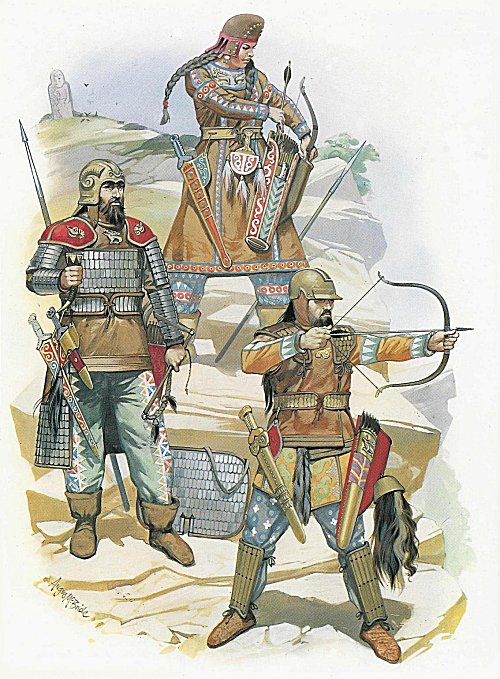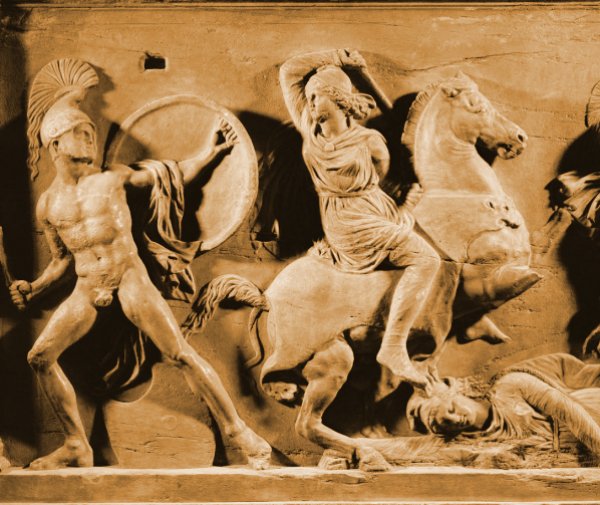It’s Not Just Girls. Boys Struggle With Body Image, Too.
Obsessing about weight, worrying about physical flaws, or just aspiring to take a perfect selfie isn't just a "girl thing." Negativity about our body image has no gender boundaries and, increasingly, research shows it’s an issue for boys, too.
One mom shares the story of her 12-year-old son who stopped eating his packed school lunch. After he lost weight and seemed out of sorts, she discovered he had restricted his eating because he wanted "six-pack" abs. Another mother recalls when her 15-year-old son began lifting weights for football and became preoccupied with his muscles.
So what do you do when your adolescent son is worried about being too skinny? Or when your high school teen frets about not being “ripped” enough?
“[Boys] learn early on that men who have big muscles are more celebrated in our society then those who are skinny or small," says Robin Silverman, body-image expert and author of "Good Girls Don’t Get Fat."
A recent survey finds that one in three boys says social media makes them feel more self-conscious about their appearance and more than 50 percent of teen boys said they had complained about their appearance in the past month. Meanwhile, a recent study found the fear of being too skinny may put teen boys at risk for depression or steroid use.
“Body image is traditionally thought of as a female problem and this creates an additional issue, which is that more boys are not speaking up about it, more parents aren’t talking to their boys about it,” says Silverman.
Silverman says body image issues affect boys as young as preschool age, when they start to learn that appearance matters and that people judge others by it.
Whether it's Superman, Spiderman or Thor, boys are influenced by every muscled cartoon hero they see. Even their Halloween costumes are heavily padded with neoprene “muscles” in the arms, chest and abs. And as boys grow and puberty strikes, the images and messages only get louder and more pervasive, not only from what they see on TV or in the pro athletes they admire, but in what their peers say.
The terms ‘fat’ and ‘thin’ are not just descriptors of weight and size, they become descriptors of character, says Silverman. “A boy who is skinny is associated with being weak or small or maybe they are teased and called a ‘girl.’ A boy who is fat is associated with being lazy or unsuccessful."
“All they want is to be associated with good terms—so people will think better of them,” says Silverman.
A 2012 study published in the journal Pediatrics found that 40 percent of 2,793 Minneapolis-St. Paul middle and high school boys surveyed exercised regularly with the goal of bulking up by using products like steroids and protein powders. Researchers found that two-thirds of those boys were willing to change their eating and exercise habits in order to be more toned and muscular, which they viewed as the ideal.
Carolyn Savage, a mom of five and former teacher and elementary school principal in Toledo, Ohio, says she has seen body issues play out in a very detrimental way in the classroom. “Size is so important in the social pecking order of young boys,” she says.
With her oldest two sons, who are both teens, Savage says that while they both have lean builds and have always been active athletes, they became more conscious about their appearances in middle school with the onset of puberty.
Savage describes her boys as “lucky" in that they both joined a sport—distance running—that suits their body type. “I don’t think they’ve ever looked at themselves as being different or resented their body type…they look like all of the other distance runners.”
However, she does remember when her oldest son Drew, a 19-year-old college freshman, who is 6 feet tall and 137 pounds, realized at age 10 that he should quit baseball. “We asked him why and I remember him flexing his biceps and making a joke about how he was probably never going to have the guns to ‘hit it out of the park.’"
Drew got an athletic scholarship and runs cross country track at Ohio University. “He figured it out,” his mom says.
Silverman suggests parents look for signs in their boys, whether it’s skipping meals or a change in sleeping patterns or exercising to the extreme or behaviorally acting out.
And she adds that ultimately parents—both fathers and mothers —are the biggest body image role models for their sons.
“Teach your kids to eat in a healthy, nutritious manner, in a balanced way on a daily basis. Drink enough water. Blow off stress in productive ways by exercising daily,” she says. “Kids should be taught that if you are doing those things, wherever your body falls [in size or weight] is ok.”
To help ease the problem, she also suggests raising awareness that everyone has body image issues, not just girls, and using a wider range of body types of men in advertising.
Honestly, we should be including all kinds of people in our advertising, whether it's women, men, transgender people or gender-nonconforming folks. We should have all types of races and shapes in the pages of magazines and on TV. That way we'd know that our bodies are all normal and beautiful, instead of beating ourselves up that we don't all look one — very airbrushed — way.



